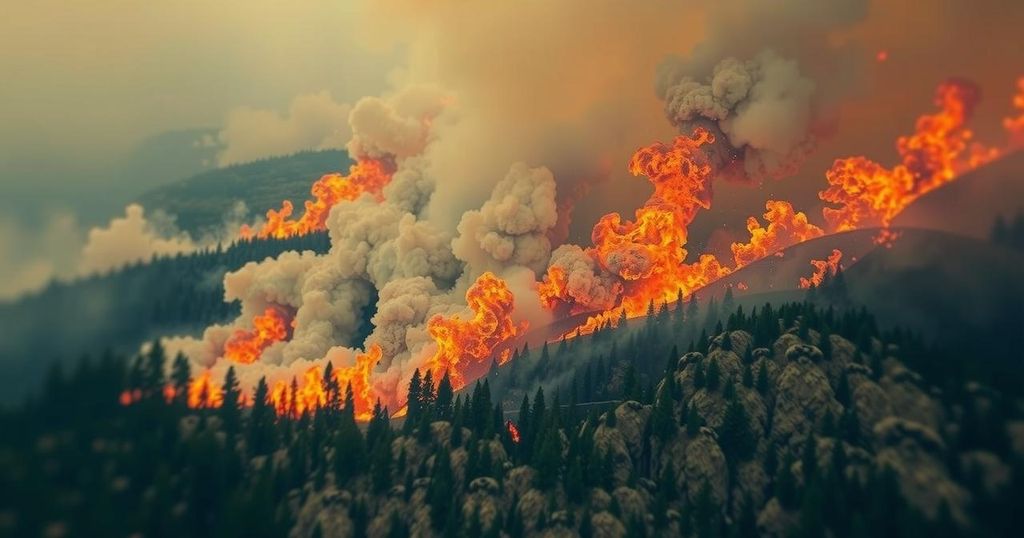New research indicates that wildfires, worsened by global heating, may lead to an additional 12,000 deaths annually due to smoke inhalation, particularly impacting regions such as Australia, South America, Europe, and Asia. Studies published in Nature Climate Change explore the effects of climate change and human interventions on wildfire mortality, revealing an increasing trend in deaths linked to PM2.5 from wildfires.
Recent research indicates that smoke pollution from wildfires, exacerbated by global heating, may contribute to the deaths of an additional 12,000 individuals annually due to inhalation of harmful smoke. This increase in mortality is particularly pronounced in regions such as Australia, South America, Europe, and Asia’s boreal forests. The studies, published in the journal Nature Climate Change, analyzed how greenhouse gas emissions influence the frequency and severity of wildfires in contrast to other human activities that reduce burn areas, such as deforestation for agriculture or infrastructure development. The research led by Dr. Chae Yeon Park from Japan’s National Institute for Environmental Studies estimated that nearly 100,000 fatalities related to wildfire smoke occurred each year in the 2010s, primarily attributed to fine particulate matter (PM2.5), which can have serious health implications by infiltrating the lungs and bloodstream. The relationship between rising temperatures, decreasing humidity, and increased fire risks complicates the understanding of how global warming affects wildfire-related deaths. By utilizing diverse models of global vegetation and fire, the researchers distinguished the impacts of climate change from those of land use changes, revealing that, despite regional variations, warmer climates lead to greater mortality associated with PM2.5 from wildfires. The findings underscored the heightened toxicity of wildfire smoke, which exceeds that of pollutants from other sources, necessitating further consideration of public health strategies in the face of climate change. For context, Professor Hilary Bambrick from the Australian National University remarked on the alarming exposure that many Australians faced during the 2019-2020 bushfires, noting, “This resulted in hundreds of deaths at the time, and will likely have long-term health consequences for many.” Additionally, a separate study highlighted that while landscape-altering human activities had somewhat mitigated burned areas, the overarching threat of climate change remains formidable, with an increasing trend of fire prevalence each year. Professor Wim Thiery, a co-author of this study, emphasized the relentless progression of climate change, stating that the area affected by wildfires is expanding at an accelerating rate.
Wildfires have become a critical public health concern, particularly in the context of climate change, which has provoked an increase in the frequency and intensity of these disasters globally. The correlation between rising temperatures, lower humidity levels, and an uptick in wildfires has raised alarms about the implications of smoke exposure on human health. Particulate matter such as PM2.5, emitted from wildfires, is known for its ability to penetrate deeply into the lungs, posing severe health risks. Understanding the complex interaction between climate change, land use, and wildfire dynamics is essential for developing effective responses to the increasing threat posed by wildfire-related air pollution.
In summary, the findings of the studies published in Nature Climate Change illustrate a concerning trend: as global temperatures rise, the incidence and impact of wildfires are expected to increase, leading to thousands of premature deaths each year due to smoke inhalation. The research highlights the interplay between climate change and human actions, underlining the urgent need for comprehensive strategies to mitigate the health impacts stemming from wildfire smoke, particularly in vulnerable regions. Profound awareness of these health effects is essential for policymakers aiming to address public health parameters associated with climate change.
Original Source: www.theguardian.com






